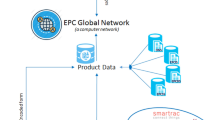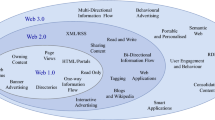Abstract
With the development of blockchain technology, secure and reliable data storage can be provided. Therefore, data uplinks have become a new trend in recent years. However, how to achieve data value remains a problem in the implementation of data transactions. In order to address this problem, this article aimes to discuss a bidirectional and trusted transaction protocol between two different assets in the blockchain system (Bitrans). First, we used the characteristics of different assets, and designed data storage formats. Then, we divided the transaction process into three states to identify the stage of the transaction. Bitrans can be achieved by controlling the state of transactions with a new consensus algorithm based on Practical Byzantine Fault Tolerance (PBFT). Finally, Bitrans was implemented and validated using Hyperledger Fabric. Experiments confirmed that the exchange of different assets can be achieved without excessive computer resources with the above protocol.












Similar content being viewed by others
Reference
McConaghy T, Marques R, M¨uller A, De Jonghe D, McConaghy T, McMullen G, Henderson R, Bellemare S, Granzotto A (2018) Bigchaindb: A scalable blockchain database, white paper, BigChainDB
Lin Q, Wang H, Pei X, Wang J (2019) Food safety traceability system based on blockchain and epcis. IEEE Access 7:20698–20707
Azaria A, Ekblaw A, Vieira T, Lippman A (2016) Medrec: Using blockchain for medical data access and permission management. in: 2016 2nd International Conference on Open and Big Data (OBD), IEEE pp 25–30
Shahnaz A, Qamar U, Khalid A (2019) Using blockchain for electronic health records. IEEE Access 7:147782–147795
Nakamoto S et al (2008) Bitcoin: A peer-to-peer electronic cash system. Bitcoin–URL: https://bitcoin.org/bitcoin.pdf
Wood G et al (2014) Ethereum: A secure decentralised generalised transaction ledger. Ethereum project yellow paper 151:1–32
Yue L, Junqin H, Shengzhi Q, Ruijin W (2017) Big data model of security sharing based on blockchain. in: 2017 3rd International Conference on Big Data Computing and Communications (BIGCOM), IEEE pp 117–121
Xiong W, Xiong L (2019) Smart contract based data trading mode using blockchain and machine learning. IEEE Access 7:102331–102344
Firoz MH, Ahmed Z (2017) Defensive protocol to ensure safe mobile financial transaction in current context. in: 2017 Third Asian Conference on Defence Technology (ACDT), IEEE pp 54–58
Siris VA, Nikander P, Voulgaris S, Fotiou N, Lagutin D, Polyzos GC (2019) Interledger approaches. IEEE Access 7:89948–89966
Croman K, Decker C, Eyal I, Gencer AE, Juels A, Kosba A, Miller A, Saxena P, Shi E, Sirer EG et al (2016) On scaling decentralized blockchains, in: International conference on financial cryptography and data security, Springer pp 106–125
Robinson P, Hyland-Wood D, Saltini R, Johnson S, Brainard J (2019) Atomic crosschain transactions for ethereum private sidechains, arXiv preprint arXiv:1904.12079
Herlihy M (2018) Atomic cross-chain swaps, in: Proceedings of the 2018 ACM symposium on principles of distributed computing. 245–254
Hope-Bailie A, Thomas S (2016) Interledger: Creating a standard for payments. in: Proceedings of the 25th International Conference Companion on World Wide Web 281–282
Crosby M, Pattanayak P, Verma S, Kalyanaraman V et al (2016) Blockchain technology: Beyond bitcoin. Applied Innovation 2(6–10):71
Yuan Y, Wang F-Y (2016) Blockchain: the state of the art and future trends. Acta Automatica Sinica 42(4):481–494
W¨ust K, Gervais A (2018) Do you need a blockchain?. in: 2018 Crypto Valley Conference on Blockchain Technology (CVCBT), IEEE 45–54
Zheng Z, Xie S, Dai H, Chen X, Wang H, An overview of blockchain technology: Architecture, consensus, and future trends, in, (2017) IEEE International Congress on Big Data (BigData Congress). IEEE 2017:557–564
Delgado-Segura S, P´erez-Sola C, Navarro-Arribas G, Herrera-Joancomart´ı J (2018) Analysis of the bitcoin utxo set. in: International Conference on Financial Cryptography and Data Security, Springer 78–91
Zahnentferner J (2018) Chimeric ledgers: Translating and unifying utxo-based and account-based cryptocurrencies. IACR Cryptology ePrint Archive (2018)262
Cachin C (2016) Architecture of the hyperledger blockchain fabric, in: Workshop on distributed cryptocurrencies and consensus ledgers. 310
Liang X, Zhao J, Shetty S, Liu J, Li D, Integrating blockchain for data sharing and collaboration in mobile healthcare applications, in, (2017) IEEE 28th Annual International Symposium on Personal, Indoor, and Mobile Radio Communications (PIMRC). IEEE 2017:1–5
Wang S, Zhang Y, Zhang Y (2018) A blockchain-based framework for data sharing with fine-grained access control in decentralized storage systems, Ieee. Access 6:38437–38450
Nizamuddin N, Hasan HR, Salah K (2018) Ipfs-blockchain-based authenticity of online publications. in: International Conference on Blockchain, Springer pp 199–212
Szabo N (1996) Smart contracts: building blocks for digital markets. EXTROPY: The Journal of Transhumanist Thought (16)18
King S, Nadal S (2012) Ppcoin: Peer-to-peer crypto-currency with proof-of-stake. self-published paper, August, 19(1)
Angelis SD, Aniello L, Baldoni R, Lombardi F, Sassone V (2017) PBFT vs proof-of-authority: applying the CAP theorem to permissioned blockchain. Italian Conference on Cybersecurity
Ateniese G, Bonacina I, Faonio A et al (2014) Proofs of Space: When Space is of the Essence[M]. Lecture Notes in Computer Science. Cham: Springer International Publishing 538−557
Gai F, Wang B, Deng W, Peng W (2018) Proof of reputation: a reputation-based consensus protocol for peer-to-peer network. Springer, Cham
Castro M, Liskov B (1999) Practical Byzantine fault tolerance[C]. Proceedings of the 3rd Symposium on Operating Systems Design and Implementation(OSDI) 173−186
Yang F, Zhou W, Wu Q, Long R, Zhou M (2019) Delegated proof of stake with downgrade: a secure and efficient blockchain consensus algorithm with downgrade mechanism. IEEE Access, PP(99), 1-1
Wang Q, Yu J, Peng Z, Bui VC, Xiang Y (2020) Security Analysis on dBFT Protocol of NEO
Kiayias A, Russell A, David B et al (2017) Ouroboros: A Provably Secure Proof-of-Stake Blockchain Protocol[M]. Advances in Cryptology – CRYPTO 2017. Cham: Springer International Publishing 357–388
Lin C, Lei X, Shah N, Gao Z, Shi W (2017) On Security Analysis of Proof-of-Elapsed-Time (PoET). International Symposium on Stabilization, Safety, and Security of Distributed Systems. Springer, Cham
Qiu T, Zhang R, Yuan G (2019) Ripple vs. swift: transforming cross border remittance using blockchain technology - sciencedirect. Procedia Comput Sci 147:428–434
Churyumov A (2016) Byteball: A decentralized system for storage and transfer of value. https://byteball.org/Byteball.pdf
Ribero Y, Raissar D (2018) Dagcoin whitepaper. Whitepaper, no. May, 1-71
Hao Y, Li Y, Dong X, Fang L, Chen P, Performance analysis of consensus algorithm in private blockchain, in, (2018) IEEE Intelligent Vehicles Symposium (IV). IEEE 2018:280–285
Zheng Z, Xie S, Dai H-N, Chen W, Chen X, Weng J, Imran M (2020) An overview on smart contracts: Challenges, advances and platforms. Future Generation Computer Systems 105:475–491
Liu J, Liu Z (2019) A survey on security verification of blockchain smart contracts. IEEE Access 7:77894–77904
Clack CD, Bakshi VA, Braine L (2016) Smart contract templates: foundations, design landscape and research directions, arXiv preprint arXiv:1608.00771
Watanabe H, Fujimura S, Nakadaira A, Miyazaki Y, Akutsu A, Kishigami J, Blockchain contract: Securing a blockchain applied to smart contracts, in, (2016) IEEE international conference on consumer electronics (ICCE). IEEE 2016:467–468
Hasan HR, Salah K (2019) Combating deepfake videos using blockchain and smart contracts, Ieee. Access 7:41596–41606
Sukhwani H, Mart´ınez JM, Chang X, Trivedi KS, Rindos A (2017) Performance modeling of pbft consensus process for permissioned blockchain network (hyperledger fabric). in, 2017 IEEE 36th Symposium on Reliable Distributed Systems (SRDS) IEEE 253–255
Collins FS, Varmus H (2015) A new initiative on precision medicine. N Engl J Med 372(9):793–795
Aronson SJ, Rehm HL (2015) Building the foundation for genomics in precision medicine. Nature 526(7573):336–342
Ozercan HI, Ileri AM, Ayday E, Alkan C (2018) Realizing the potential of blockchain technologies in genomics. Genome Res 28(9):1255–1263
Sukhwani H, Wang N, Trivedi KS, Rindos A (2018) Performance modeling of hyperledger fabric (permissioned blockchain network). in, 2018 IEEE 17th International Symposium on Network Computing and Applications (NCA) IEEE 1–8
Author information
Authors and Affiliations
Corresponding author
Ethics declarations
Conflict of interest
We declare that they have no known competing financial interests or personal relationships that could have appeared to influence the work reported in this paper. We declare that there is no financial interest/personal relationship which may be considered as potential competing interests.
Additional information
Publisher's Note
Springer Nature remains neutral with regard to jurisdictional claims in published maps and institutional affiliations.
Rights and permissions
About this article
Cite this article
Huang, G., Zou, Yb., Chen, S. et al. Bitrans: A bidirectional and trusted data transaction protocol based on the blockchain system. Peer-to-Peer Netw. Appl. 15, 1311–1327 (2022). https://doi.org/10.1007/s12083-021-01287-z
Received:
Accepted:
Published:
Issue Date:
DOI: https://doi.org/10.1007/s12083-021-01287-z




